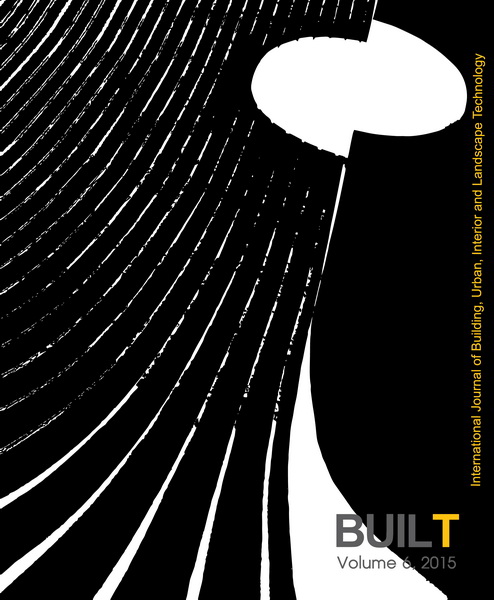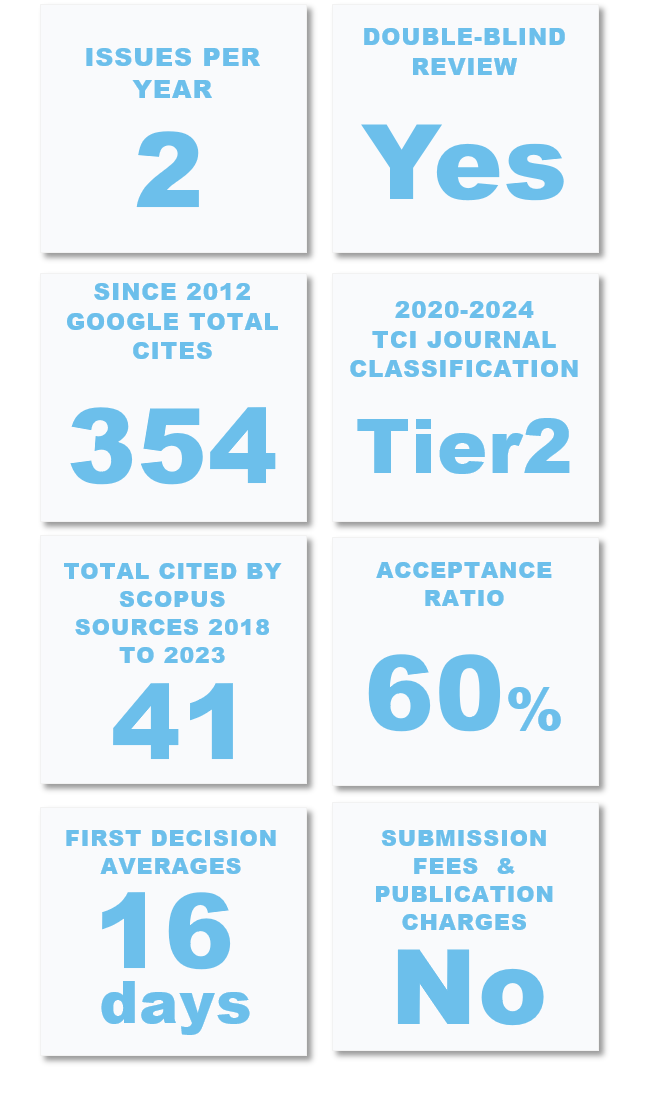Thermal Balance and the Role of Clothing on Thermal Comfort in Hot and Humid Climate
Keywords:
Thermal comfort, Thermal balance, Clothing, Heat transferAbstract
the recent year, human thermal comfort has been claimed to be an adaptive behaviour and controllable environment. Clothing is a controllable personal environment and it should play an important part in built environmental designs. The present study conducted an analysis that was divided into three sections. The first section examined the human thermal comfort evaluation on thermal balance equation. The second section described each term of thermal balance equation. The third section reviewed the role of clothing in parts of heat transfer. This review recommend that clothes property such as evaporative heat transfer resistance of clothing should be included into the thermal balance for thermal comfort estimation.
Downloads
References
ANSI/ASHRAE Standard 55. (2013). Thermal environmental conditions for human occupancy. GA: ASHRAE.
ASHRAE. (1966). Thermal comfort conditions. New York: ASHRAE Standard 55-66.ASHRAE. (2013).
ASHRAE handbook-fundamentals. Atlanta: ASHRAE.
Djongyang, N., Tchinda, R. & Njomo, D. (2010). Thermal comfort: A review paper. Renewable and Sustainable Energy Reviews, 68, 2626-2640.
DuBois, D. & DuBois, E. (1916). A formular to estimate surface area if height and weight are known. Arch. Intern. Med, 17, 863.
Fanger, P. O. (1967). Calculation of thermal comfort: Introduction of a basic comfort equation. ASHRE Trans, 73(2), 1-4.
Fanger, P. O. (1970). Thermal comfort. Copenhagen: Danish Technical Press.
Farnworth, B. (1986). Numerical model of the combined diffusion of heat and water vapor through clothing. Textile Research Journal, 56(11), 653-665.
Fu, M., Yu, T., Zhang, H., Arens, E., Weng, W. & Yuan, H. (2014). A model of heat and moisture transfer through clothing integrated with the UC Berkeley comfort model. Building and Environment, 80, 96-104.
ISO 7730. (2005). Ergonomics of the thermal environment- analytical determination and interpretation of thermal comfort usin calculation of the PMV and PPD indices and local thermal comfort criteria (3ed.). Geneva: International Organization for Standardization.
Li. (1986). Fabric wetting factors. Textile Asia, 30(6), 39-41.
Li, Y. & Luo, Z. X. (2000). Physical mechanisms of moisture diffusion into hygroscopic fabric during humidity transients. Journal of the Textile Institute, 91(2), 302- 316.
Li, Y., Zhu, Q. & Yeung, K. W. (2002). Influence of thickness and porosity on coupled heat and liquid moisture transfer in porous textiles. Textile Research Journal, 72(5), 435-446.
McNall, J., Jaax, J., Rohles, F. H., Nevins, R. G. & Springer, W. (1967). Thermal comfort (thermally neutral) conditions for three levels of activity. ASHRAE Transactions, 73(part 1), 1.3.1.–1.3.13
Mecheels, J. H. & Umbach, K. H. (1977). The psychometric range of clothing systems in clothing comfort: Interaction of thermal, Ventilation, Construction and Assessment Factors. In N. S. Hollies & R. F. Goldman (Eds.). Ann Arbor Science. (133-151). MI: Ann Arbor Science Publishers.
Nielsen, M. & Pedersen, L. (1952). Studies on the heat loss by radiation and convection from the clothed humanbody. Acta Physiol Scand, 27(2-3), 272.
Ogbonna, A. C. & Harris, D. J. (2008). Thermal comfort in sub-Saharan Africa: field study report in Jos-Nigeria. Applied Energy, 85(1), 1-11.
Olsen, B. W. (1982). Thernal comfort. In Bruel & Kjaer. Techical Review No. 2. (3-41). Copenhagen, Denmark: Naerum Offset.
Parsons, K. (2014). Human thermal environments. Boca Raton: CRC Press.
Rengasamy, R. S. (2011). Improving moisture management in apparel. In G. Song (Eds.). Improving comfort in clothing. (pp. 182-215). Camgridge, UK: Woodhead Publishing.
Rohles, F. H. & Nevins, R. G. (1971). The nature of thermal comfort for sedentary man. ASHRAE Transactions, 77 (1), 239-246.
Umbach K. H. (1993). Aspects of clothing physiology in the development of sportswear. Knitting Technique, 15(3), 165-169.
Wehner, J. A. (1987). Moisture transport through fiber networks. Ph.D. Thesis, Princeton University.
Winslow, C.-E. A., Gagge, A. P. & Herrington, L. P. (1939). The influence of air movement upon heat losses fromthe clothed human body. American journal of physiology, 127, 505-518.
Downloads
Published
How to Cite
Issue
Section
License

This work is licensed under a Creative Commons Attribution-NonCommercial-NoDerivatives 4.0 International License.












